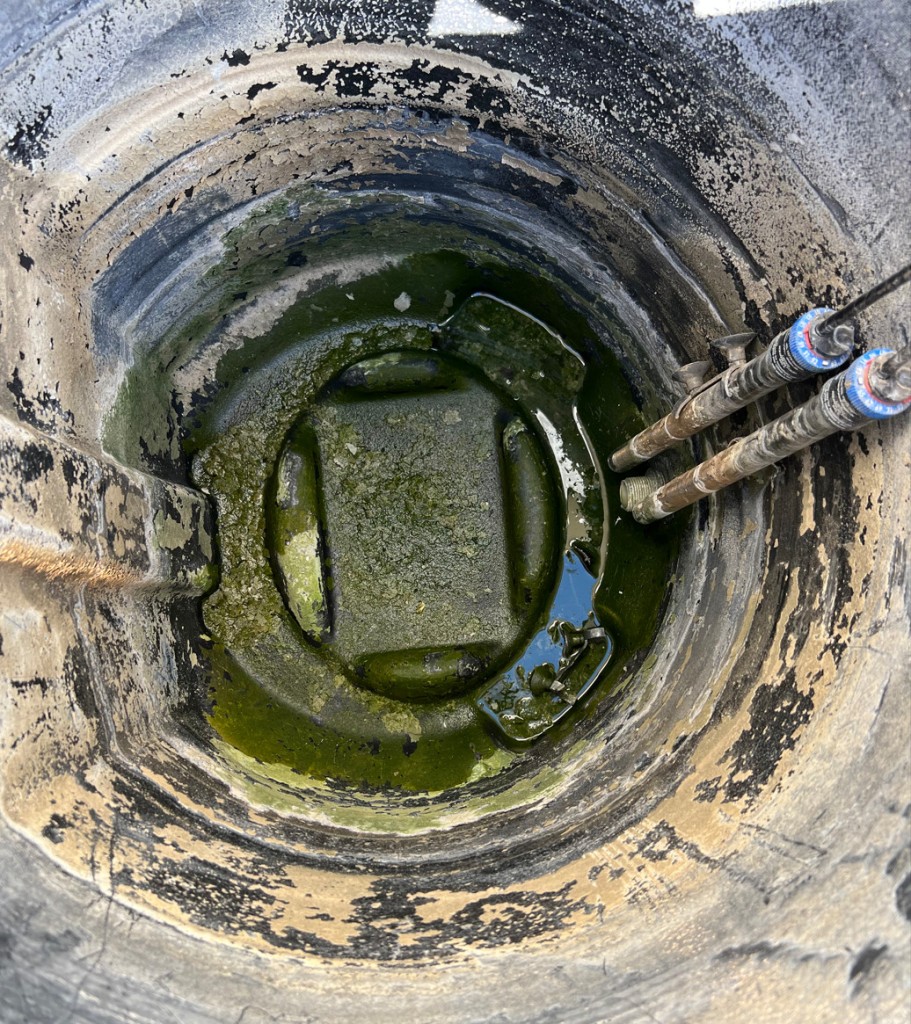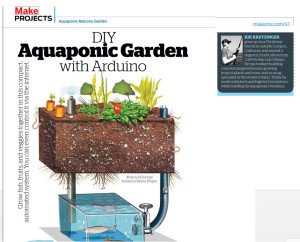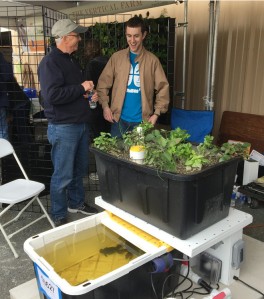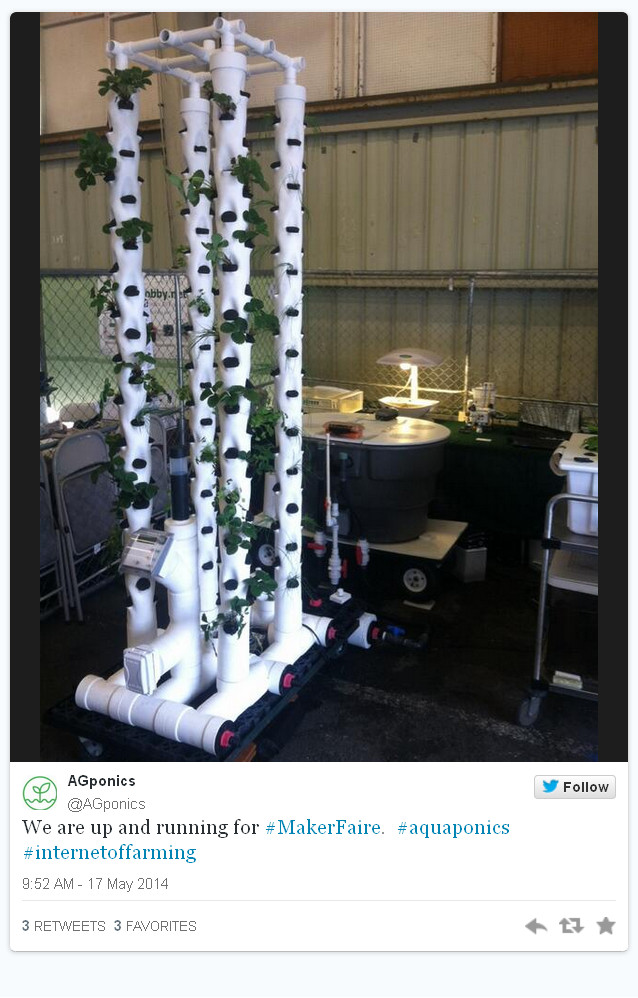ONE PROBLEM BEING ADDRESSED –H2O SCALE August 21, 2022
Posted by rik94566 in agponics.com, aquaponic devices, aquaponic issues, aquaponic systems, aquaponics, auqaponics automation, DIY aquaponics.Tags: aquaponic water issues, aquaponics, DIY aquaponics, indoor aquaponics, rik kretzinger, water quality
add a comment

As the water situation becomes much more extreme in Northern California water quality changes depending upon the source of water supply. Water hardness has changed many, many times over the last 5 years and I have had to be more careful with pH and hardness when doing water changes or water additions in the fish tanks and monitoring much more and I still end up with this. So I have now developed a plan on what needs to take place and starting to put the plan into action and will be talking about the efforts now as well as other interesting things I am tracking and working at getting put into place in my grow area. Once I have cleaned up the scale issues I can move on to misting systems and use of some more advanced technology to get me to the next level in my efforts.
HOME ASSISTANT — NODE-RED August 31, 2020
Posted by rik94566 in agponics.com, aquaponic automation, aquaponic systems, aquaponics, auqaponics automation, Controlled Environment Agriculture, DIY aquaponics, indoor aquaponics, internet of farming, Internet-of-Farming, Uncategorized.Tags: aquaponic automation, aquaponic devices, Home Assistant, Internet-of-Farming, Node-Red, rik kretzinger, rik-dyi-IOT, rik94566
add a comment
Researching how best to start learning Node-Red I spent a lot of time on YouTube watching what Node-Red is and how people learned how to use it. As always a lot of YouTuber’s put out content and some are clearly better at actually helping people understand concepts and produce valuable content that can be put to use by a non-computer programmer type person.
So I developed my list of people that were best for me to follow and start the process of learning this new skill set. Many of the ones I like were talking about the use of Node-Red with Home Assistant.
I had looked at Home Assistant some years ago and at the time it seemed Home Assistant was for very advanced users that are very good at the command prompt and with a lot of system knowledge. Way above my level at the time.
Then my research turned up this reference and changed my perspective on using Home Assistant.
This was, just what I was looking for.
Make Magazine – digital release of vol 47 — September 22, 2015
Posted by rik94566 in DIY aquaponics, internet of farming, rik kretzinger, rik94566.Tags: aquaponic automation, aquaponics, Make:SF, rik, rik kretzinger
2 comments
I learned that Make Magazine vol 47 is now on-line.
So here is the link for review:
It is my understanding that the Projects pages link has not been activated as yet. This is where details of the build can be found.
Arduino Sketches are found there as well.
But understand it is only starting code that will be added to and developed as time goes on. Right now the UNO sketches only handles a timer functionality. As people build the Gardens and report back their code updates I will be posting them here for all of us to learn from.
There is also a IoT Sketch using the code generated by Temboo that sends a SMS message system that again is starting code.
I have to point out that I DO NOT support the sketches from a technical perspective they are purely for reference and a starting point for people to use and develop on there own. As I build out the interface on the project I will be posting code and sketches that work and would be of interest to the readers of this BLOG.
Also I have released some Instructables that support the article from a build perspective. More are to come as they are developed or change made in the design of the Balcony Garden.
BALCONY GARDEN – diy aquaponic system — Published in MAKE MAGAZINE this issue September 21, 2015
Posted by rik94566 in auqaponics automation, Balcony Garden, DIY aquaponics, internet of farming, rik94566.Tags: aquaponics, arduino, DIY aquaponics, make magazine, rik, rik kretzinger
3 comments
First article published in Make Magazine vol. 47
DIY aquaponic Balcony Garden — my copy came today!
Make sure and read it!
Temboo — aquaponic “HELLO WORLD” equivalent June 1, 2015
Posted by rik94566 in agponics.com, aquaponic automation, aquaponics, aquaponics electronics, Balcony aquaponics, internet of farming, Internet-of-Farming, rik94566.Tags: agponics, aquaponics, automation, balcony aquaponics, Controlled Environment Agriculture, DIY aquaponics, rik kretzinger, sensor, Temboo
add a comment
With the help of Temboo – my aquaponic Balcony Unit generated its first TEXT Message:
MESSAGE IS:
aquaponic Balcony Unit grow bed now filling.
Temboo – my new found friend May 28, 2015
Posted by rik94566 in aquaponic automation, aquaponics, arduino, Internet-of-Farming, Temboo.Tags: agponics, aquaponic automation, balcony aquaponics, rik kretzinger
add a comment
Ever since the release of the “Internet of Farming” YouTube interview – the recurring question is how to get the code working on my Arduino for my situation. Well — the reality of it is that everyone has a very different situation and totally different conditions specific to their setup and needs.
In the video I was using what was the best solution at the time to overcome this programming issue for me and what I was working to accomplish. I spent a lot of time on research and internet searches and came up with the best solution at the time. Fast forward 3 years and factor in advancements in technology and now things have progressed at a fast rate and new tools and companies are popping up in this next big area of technology growth IoT – Internet of Things.
I started learning about Temboo ( https://temboo.com/ ) on different blogs that I follow and checked them out and began to learn more about their solution. It seemed very simple in concept and very close to what I was looking for to help others on the same journey I have been on for a long time now. Couple this with the Balcony Unit I have been developing over the last year for entry level people wanting a solution to learn Aquaponics and use automation — it was a clear match. It is a match because if someone built a Balcony Unit for themselves or purchased a kit of parts then they can customize the software solution for their needs using Temboo. All I would have to do is supply a base code to get people started and then they can take their Balcony Units ( or other projects you have ) to whatever level you want. There you go a PERFECT WORLD!
So as it goes I contacted Temboo about working with me on the Balcony Unit and the article for MAKE Magazine that is schedule to run sometime in the Fall of this year. Well it turns out Temboo was interested in this effort and will be working with me to get some base code build that all of you will have access to right here for the Balcony Unit. John Sigmier of Temboo reached out to me and let me know Temboo was interest in this effort. So I will be blogging about all this effort now that we are close to pulling it all together for the finished Balcony Unit effort. You will be reading about this effort and what I learn in this process.
Technology is complicated — May 8, 2015
Posted by rik94566 in Controlled Environment Agriculture, DIY aquaponics, Electronic Componets, indoor aquaponics, IoT aquaponics, Temperature Probe.Tags: agponics, aquaponic automation, aquaponics, arduino, arduino sketch, automation, DIY aquaponics, indoors aquaponics, microcontroller, rik kretzinger, Temboo, YUN
add a comment
I say this because I will be displaying my aquaponic – IoT – Balcony Unit at Maker Faire next week in San Mateo. To accomplish the IoT part of the build I have to use technology that allows for internet communication thus IoT! Well there are many options available to accomplish this task – some not so easy and others not enough features to be effective for this project.
So my choice in this case is the Arduino YUN —
I made this choice because I had one (but had not used it as yet) and the fact that documentation on it is easy to find. The other fact is that Temboo www.temboo.com uses the YUN as one of its options for their solution to the Internet of Things and I am working with them on this open source project so many others will be able to get up and running in short order and have simpler options to add additional capability based on the persons needs and I will not have to supply the customer support for any aspect of the code other than give everyone a stating point.
WELL – that is where things got interesting.
Had to work through getting the YUN on the network of choice. Not a big deal but it took some time and many attempts to get it dialed in because the Arduino instructions tell you to go to arduino.local to find the individual unit. Well this only works about 60% of the time. So the solution is to use the IP address of 192.168.24.1 now I could configure the thing to my liking. Once configured it would not show up in the Arduino IDE at all. Major issue for me as I had no idea if the unit configured or not. I finally when on to my wireless router to see if the board was being recognized. Had to dig out all the USER ID and PASSWORD info and then work through all the menus to determine what in fact was connected to the router. There is was — YEA
Now I had to research out why it was not listed as a port option in my Arduino IDE. Well after some time and deep research I found that Arduino IDE only works some times for the YUN on wireless. So the uploading from Arudino IDE to the board is not an option as most of the YouTube videos demonstrate quite well. This becomes an issue because I found out that as configured the YUN does not have enough on board memory, so a SD card is needed.
Using an SD card with the YUN requires that the card be format using the YUN. To do that you need to know that the YUN is connected to the internet and working properly which is very hard to know if it is or not.
So once you know the YUN is connected and you have it connected through cable to your computer you need a file called ” YunDiskSpaceExpander” found on the Arduino site. Once uploaded you access it through the Serial Monitor of the Arduino IDE. If all goes well you answer a bunch of cryptic questions and bingo the thing kicks off. Once do you have a formated YUN SD enabled board.
Now I am ready for the real fun stuff to generate code to be used through Temboo so I will have “Streaming Data” and text messaging in short order – lets hope!
The good news in all of this is that I will be documenting all of this for the instructions to the Balcony unit for all to use and save anyone interested in building one or gets a kit from me that will be up and running in short order.
See you all at Maker Faire next Saturday if you make it there!
TOWER SYSTEM – set-up at Maker Faire 2014 May 22, 2014
Posted by rik94566 in adafruit, agponics.com, arduino, DIY aquaponics, DS18B20, Electronic Componets, indoor aquaponics, indoor gardens, indoor growing, Internet-of-Farming, IoT aquaponics, One-wire, Raspberry PI, Tower System, Tower Tubes.Tags: agponics, aquaponics, automation, Controlled Environment Agriculture, DIY aquaponics, indoor aquaponics, IoT, Maker Faire, microcontroller, rik kretzinger, sensor
2 comments
EDITOR’S CHOICE – not once – but 3 times @ Maker Faire – WOW May 21, 2014
Posted by rik94566 in agponics.com, aquaponic automation, aquaponics, aquaponics electronics, arduino, DIY aquaponics, indoor aquaponics, indoor gardens, indoor growing, Internet-of-Farming, IoT aquaponics, Raspberry PI, sensor, Tower System.Tags: aquaponic automation, aquaponics, automation, DIY aquaponics, indoor aquaponics, microcontroller, rik kretzinger
2 comments
Very few displays achieve 3 EDITOR CHOICE AWARDS —
RADIAL FLOW FILTER – just completed April 2, 2014
Posted by rik94566 in agponics.com, aquaponic automation, aquaponics, aquaponics electronics, Controlled Environment Agriculture, DIY aquaponics, Electronic Componets, indoor aquaponics, Internet-of-Farming, IoT aquaponics, PRODUCTS, radial flow filter, Tower System.Tags: aquaponic automation, automation, Controlled Environment Agriculture, DIY aquaponics, indoors aquaponics, IoT, microcontroller, rik kretzinger
add a comment
 Since first conceiving of the Tower unit as a concept I knew they needed to be operated differently than DWC and Media bed in how you deal with the solids from the fish. Media beds — it has not been that big a deal for me because my rule is that any tank size smaller than 350 I filter the water and break-up the solids and then put back into solution by pumping back into the grow beds. This way I lose no nutrients that the fish produce. Has worked well for over 3 years now. In the testing that I have done with the towers I found that solids need to be dealt with or things will plug up. I still will be reintroducing the broken up solids back into the system put it will take place downstream of the bio-filter component and re-injected into the new buffer tank that stabilizes fish tank water volume and height. This all came out of research I was doing on how best to handle solids in aquaponics. As designed this radial flow filter can handle up to and maybe a bit more than a 1000 gallons of fish tank water. The only thing left to figure out on this radial flow filter now is where I will be locating the outlet for the clean water. That will be dependent on fish tank water level. Should have fish tank completed this coming weekend and make the determination on this aspect of the build.
Since first conceiving of the Tower unit as a concept I knew they needed to be operated differently than DWC and Media bed in how you deal with the solids from the fish. Media beds — it has not been that big a deal for me because my rule is that any tank size smaller than 350 I filter the water and break-up the solids and then put back into solution by pumping back into the grow beds. This way I lose no nutrients that the fish produce. Has worked well for over 3 years now. In the testing that I have done with the towers I found that solids need to be dealt with or things will plug up. I still will be reintroducing the broken up solids back into the system put it will take place downstream of the bio-filter component and re-injected into the new buffer tank that stabilizes fish tank water volume and height. This all came out of research I was doing on how best to handle solids in aquaponics. As designed this radial flow filter can handle up to and maybe a bit more than a 1000 gallons of fish tank water. The only thing left to figure out on this radial flow filter now is where I will be locating the outlet for the clean water. That will be dependent on fish tank water level. Should have fish tank completed this coming weekend and make the determination on this aspect of the build.
I put together a youtube slide show if you want to see more detail of the radial flow filter:






